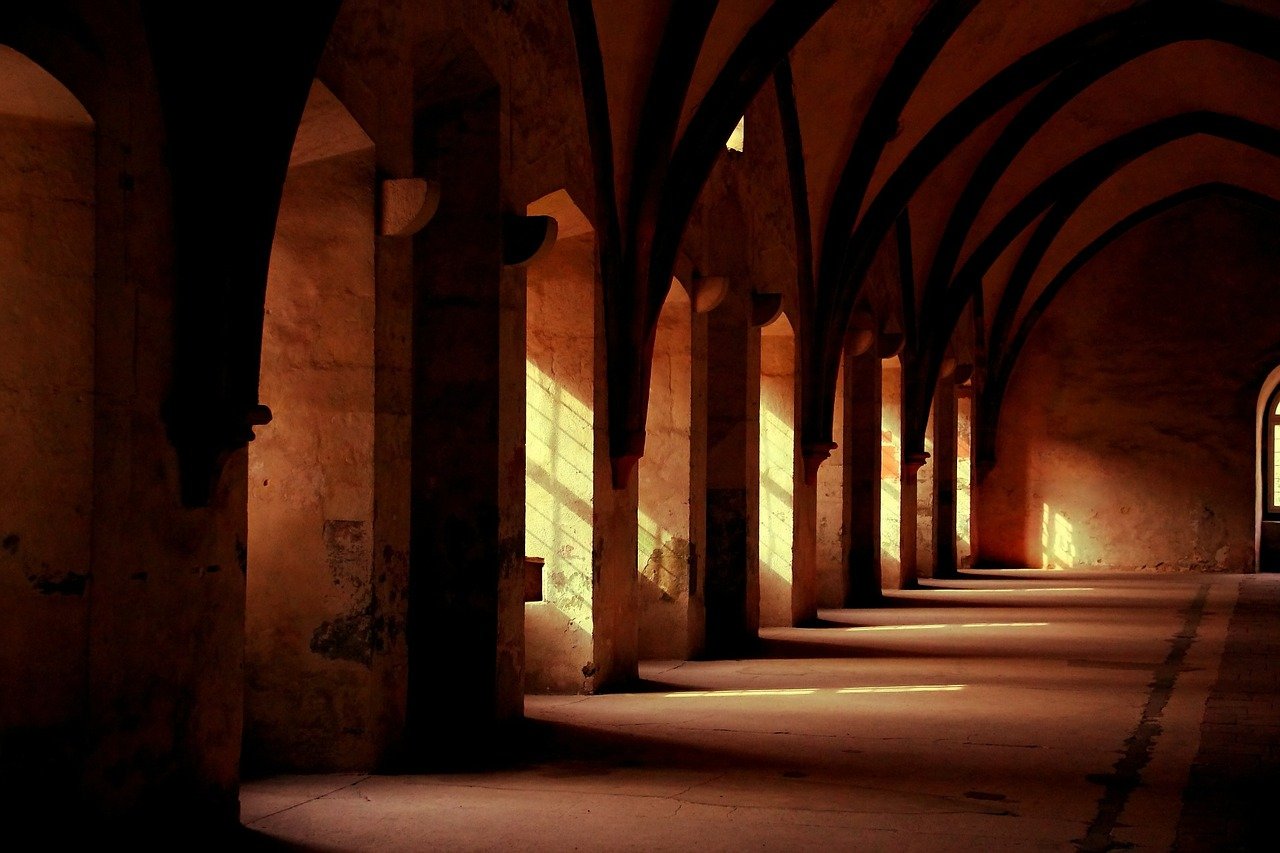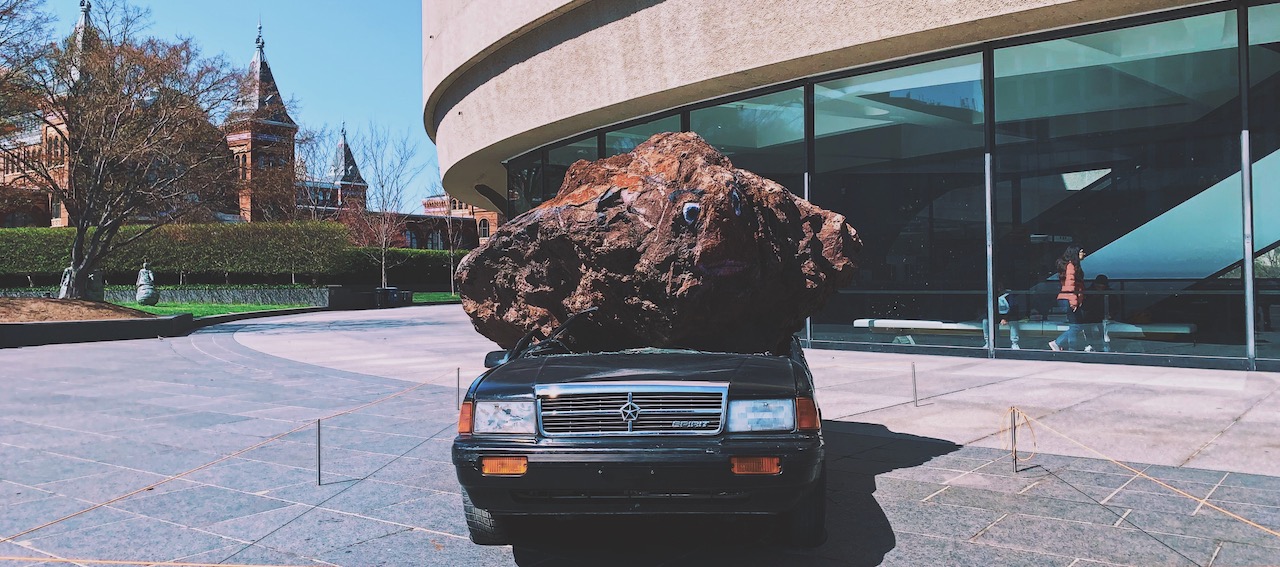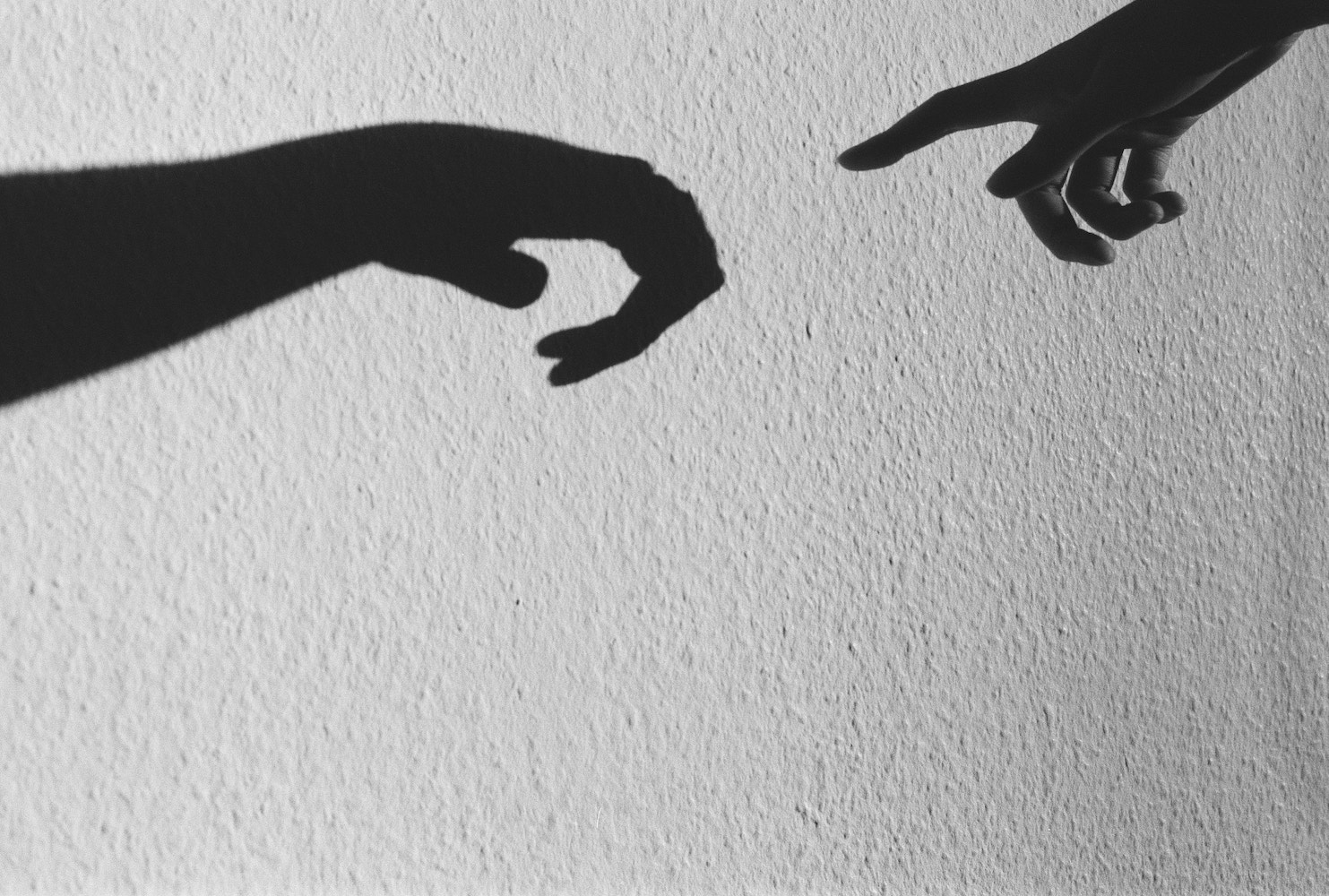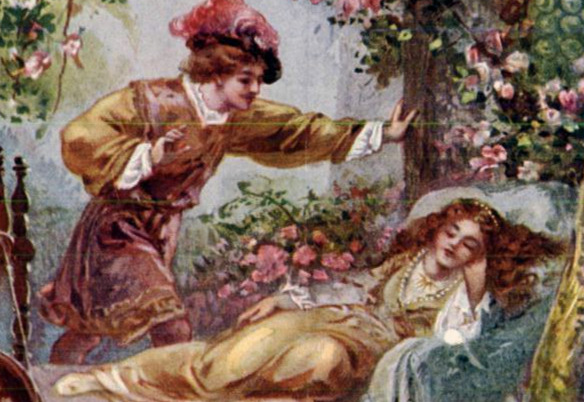Books & Culture
“Piranesi” Is a Dispatch from the Kingdom of Chronic Illness
I read the book while suffering from "long Covid," and felt connected to the author's own experience of mysterious disease

In the first pages of Susanna Clarke’s Piranesi, the novel’s titular narrator is almost carried away by three converging tides. Plunged into a landscape of marble and bone, sea, sky and crashing waves, I felt equally immersed. By the time the tides receded, leaving behind a smooth object in Piranesi’s palm—the marble finger of a statue—I had the slight premonition that I, too, had been gifted something unique and unexpected.
My husband Marc and I contracted the coronavirus while traveling in early March. When Piranesi arrived mid-September, we still couldn’t walk a mile without chest pressure and fatigue. We began reading the book aloud to each other, skipping nights when our lungs ached or we were too short of breath to speak. Soon the novel became more than an escape—it was a world in which the emotional resonances of our new lives were embodied in a story we could recognize, something we could name.
The novel became a world in which the emotional resonances of our new lives were embodied in a story we could recognize.
The experience of a long, strange sickness that stretched well beyond the initial definitions of Covid-19 was not an easy thing to communicate: not to doctors, or even to family and friends. My husband and I often felt marooned from the rest of the active world with our intimate, bodily knowledge of this novel disease and its devastating effects.
Piranesi is also alone, stranded in a mysterious House occupied only by himself, myriad statues and a character he calls “the Other.” As he looks out across a courtyard one morning, Piranesi sees the Other looking out a window opposite. “I waved to him,” Clarke writes, “He did not see me. I waved more extravagantly. I jumped up and down with great energy. But the Windows of the House are many and he did not see me.”
Clarke is best known for her first novel Jonathan Strange and Mr. Norrell, a fantastical history of 19th-century England involving two rival magicians, published in 2004. After its success, Clarke didn’t publish again for fifteen years, overcome by an undiagnosed chronic disease. In her pages, Piranesi’s meticulous record of his surroundings takes on the obsessive, keen attention of an invalid, those gifted observers whose illness, although debilitating, also affords a close-up view of objects, people and places the rest of us might miss.
When a leaf floats in on one of the tides that routinely flood the House, for example, Piranesi makes careful note of its arrival: “It was a leaf, very beautiful, with two sides curving to a point at each end. Of course it is possible that it was part of a type of sea vegetation that I have never seen, but I am doubtful. The texture seemed wrong. Its surface repelled Water, like something meant to live in Air.”
As my own illness stretched on, I found myself pressed up against physical limitations. The slightest exertion brought symptoms sailing back, forcing me to rest for weeks on end. Whenever I felt claustrophobic, desperate to escape my body’s condition, Clarke’s book was a reminder that sometimes slowing down can open up new worlds. Small things become large; ideas coalesce, statuesque; and creativity flourishes within walls.
The studied details recorded in Piranesi’s journal build into the novel’s central tension: the mystery of his circumstances, insinuated in the tug of a dark current underlying his interactions with the Other. Clarke keeps the conflict just below surface, expertly orchestrating the movements of her characters. When Piranesi discovers a clue, torn pages woven into the nests of herring gulls in one of the House’s many halls, he decides to return in “late summer—or, even better, early autumn,” so as not to disturb the birds—prolonging a reveal and building suspense until the story has crested beyond containment.
Though occupying the same halls, Piranesi and the Other live in two different realities. Piranesi is ensconced in a landscape of cold, sweeping seas; deep, menacing pools and bitter winters. The Other arrives to their weekly meetings immaculately dressed in various suits, and appears to have access to an endless supply of ham sandwiches. I began to feel uneasy about their exchanges, fearing Piranesi’s trust in his only friend was misplaced.
Something in the dynamic between the two characters was familiar. During the first months of the pandemic, we’d monitored oxygen levels from home, conserving hospital beds for those who needed them most. But as symptoms persisted into summer, I began to see specialists about our ongoing ailments—from a pulmonologist to cardiologists to an infectious disease doctor. Finally, I thought, we were going to get help.
As is the case for many patients experiencing post-viral syndrome after a Covid-19 infection, my lab tests showed nothing abnormal. Because they were not objectively measurable, the pain and fatigue that consumed my world were not recognized in the realm of medical science. The infectious disease specialist told me I was just anxious. The cardiologist, that I was just dehydrated. The pulmonologist, that I was just fine. My tears on their exam tables were met with cold recommendations to see a psychiatrist. The Other holds a similar power over Piranesi, and uses his superiority to convince him that he is mad.
The House itself holds sway over its inhabitants, casting a spell of amnesia that returns its residents to a more primal state. Piranesi fixates on food, detailing methods for securing sustenance. “It is important to keep the body well nourished,” he reminds himself, collecting seaweed for fuel and making careful calculations of the tides to ensure he has shelter.
In the absence of medical guidance, I began trying alternative methods to help us heal. I obsessed over nutrition, blending anti-inflammatory smoothies until our mouths were full of citrus-induced canker sores. I found myself thinking with affection about my apartment, which became a womb I rarely ventured from into the harsh world outside. Like Piranesi’s, our lives became shaped around survival.
Like Piranesi’s, our lives became shaped around survival.
Each of Piranesi’s diary entries is subtitled with his mode of time-keeping: “Tenth Day of the Seventh Month in the Year I discovered the Coral Halls,” he writes, or, “Ninth Day of the Fourth Month in the Year I named the Constellations”—epithets that strain to capture illusory hours. As our illness extended into autumn, calendar and clock were no longer sufficient gauges. Our time sense had warped with the year’s unexpected turns. Symptoms of a fourteen-day disease lingering for months. Seven hours in the ER stretching longer than a week of repetitious days. The breathlessness of a thirty-minute run after a five-minute walk. By winter, I was borrowing one of Piranesi’s appellations for 2020: “The Year of Weeping and Wailing.”
It was a year filled with apocalyptic scenes: bodies piled in the makeshift morgue of an ice rink, bones of the first dead barely buried before joined by the latest victims of the virus. Often I’d look down the long hallway of my pain and it would seem interminable. At times it felt like the world was coming to a close, or that it must end soon, flooded by tides of grief sweeping in, unceasing.
Like Jonathan Strange and Mr. Norrell, Clarke’s second book is haunting—Piranesi visits the remains of others, scattered throughout the halls, caring for the bones of his unnamed dead. Yet the innocent nature of Piranesi’s voice keeps the reading experience light, as he describes objects precious to him within an ominous world. His observations are both grounded in his moment and weighted with metaphors that escape the walls of his labyrinth to echo in the rooms where it is read. “In all these places I have stood in Doorways and looked ahead,” he tells us. “I have never seen any indication that the World was coming to an End, but only the regular progression of Halls and Passageways into the Far Distance.”
In many ways, a book is like a house, filled with undiscovered chambers, hidden hallways into vicarious experience. Familiar rooms you can return to, rooms with windows looking out onto new landscapes. These rooms, these pages, are a gift, washed up from the shores of another person’s world, reaching us in our own houses of pain and bewilderment, speaking, like Piranesi’s leaf, of other times and places, some lived through, some yet to come.
I often imagined the author writing from her sick couch the book I was reading from mine.
I don’t know how much Clarke’s long illness consciously informed Piranesi. I often imagined the author writing from her sick couch the book I was reading from mine. Through her words, I glimpsed a land I’d only begun to inhabit. I got the sense that I was visiting her halls—sometimes, even, that she was marking the way. “My life has been spent largely housebound for many years…Yet I don’t think I realized, straightaway, all these resonances,” Clarke told The New Yorker in a recent profile. “As soon as I started working on it seriously, then I could see them.”
The experience of being ill is notoriously difficult to describe. Susan Sontag calls it “the night-side of life, a more onerous citizenship,” in Illness as Metaphor. And though that text warns against overlaying damaging metaphors such as war onto the sick, Sontag herself resorts to the figure of speech to describe the experience—dividing humanity between the kingdom of the well and the kingdom of the sick. In On Being Ill Virginia Woolf uses a similar metaphor, alluding to those “undiscovered countries that are then disclosed” to the invalid. But how to describe this new world to those back home?
Perhaps the extended metaphor of story gave Clarke room to play with the elusive experience of illness; maybe in fantasy she found the flexibility to move with pain’s shifting wavelengths. Sometimes illness is the blinding white brilliance of marble, the shaved edge of it, razor sharp. Other times it’s the fog of a mind’s torn pages, mucked with bird shit and woven into twigs. It’s the maze learned only by treading its paths, memorizing halls with an intensity only the desire to survive can produce, until they are a part of you—so much so that you wonder if, given the chance, you’d have the strength to leave them. Other times you are running down a corridor, energy returned, intent on escape, only to hit the hard, sheer surface of a wall. The floor gives way and you fall into the dark, still waters below to float in the cold silence of your pain.
When Piranesi’s hunger sends him searching for food in a “Derelict Hall” filled with an obscuring cloud, he drops through a gap in the floor and is sent plummeting towards one of the “Drowned Halls” below, caught at the last moment by a statue’s outstretched arms. If you consider that the House’s sculptures are meant to represent metaphor itself—aesthetic representations of knowledge, ideas embodied from another world, meta-metaphors—then it’s not hard to see Clarke’s book in Piranesi’s rescue. As a reader, I felt caught up in the shared experience of the sick. As a writer, I gained the hope of one day communicating something to those back in the kingdom of the well.
I don’t know if the reader who is in good health will read illness in Clarke’s pages. No doubt for them the book holds its own found treasures. Many readers, for example, have likened the experience of quarantine to Piranesi’s labyrinth. And perhaps quarantine isn’t a bad metaphor for a protracted illness: its box-like limits, the endless days.
As a writer, I gained the hope of one day communicating something to those back in the kingdom of the well.
Even if they don’t see the invalid experience in this book, I imagine most readers can glean something from Clarke’s character 16—named for being the sixteenth person in Piranesi’s world—who arrives from somewhere beyond the House near the end of the book. Sixteen seems to embody the kind of care longed for by the chronically ill. At first, Piranesi mistrusts 16, but 16 is persistent. Ignoring his disheveled appearance, 16 sits with Piranesi, listens to him, touches him, and lets him cry for a long time. Sixteen accepts who he is without forgetting who he was. Sixteen says: “I’m sorry. I’m really, really sorry.”
Sixteen also lets Piranesi show off his world, such as his favorite “Coral Halls,” where sea life has bloomed over marble, “changing the Statues in strange and unexpected ways.” He points out the sculpture of “a Woman crowned with coral, her Hands transformed into stars or flowers,” and “Figures horned with coral, or crucified on coral branches, or stuck through with coral arrows.” The statue of one man has been so ravaged that “half of him appears to be engulfed in red- and rose-coloured flames, while the other half is not.”
Sixteen admires the beauty Piranesi has discovered—the splendor of a world others have feared, reviled or disbelieved. Sharing these hidden wonders fulfills a deep longing in Piranesi. When, at the end of the book, he likens 16 to a statue, it is to that of an androgynous figure, holding a lantern aloft—leading, if not out of illness, then at least from the halls of its loneliness.
The metaphor shifts: I glimpse Clarke in her character, showing the reader her domain, reminding me of the riches that can be revealed to those who inhabit this new land. For months I’d been paralyzed by the trauma of losing my health, spending what little energy I had searching for a way back to a former self. Without negating the horror of what had happened, reading Piranesi gently turned me back from that locked door, inviting me to venture beyond its threshold. “Show me the labyrinth,” 16 says to Piranesi, and he does.









